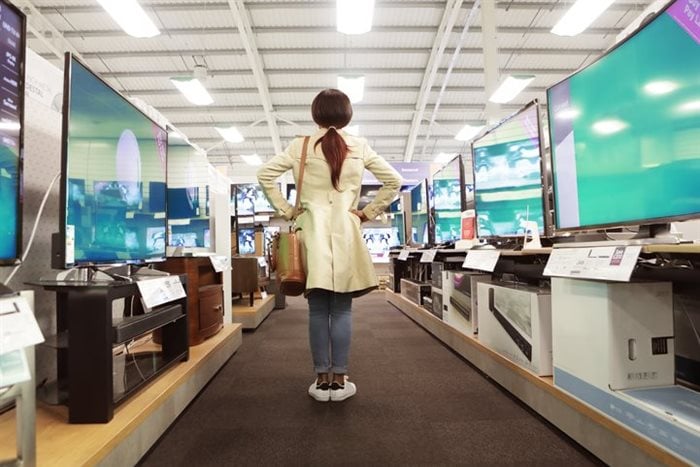
South African retailers' readiness for the fourth industrial revolution

In more developed countries, retailers have assimilated the 4IR faster, not only through enhanced e-commerce capabilities, but also through massive investment in advanced technologies and artificial intelligence (AI) technologies such as virtual reality, automation, and robotics.
Large retailers such as Walmart are digitising their entire supply chain process as they implement an omnichannel strategy. Amazon has also been an early adopter of AI and automation to improve its business efficiencies.
A recent local study commissioned by the Wholesale and Retail Seta reported that more than 40% of retail businesses in South Africa have not explored 4IR technologies. This is mainly attributed to resource constraints, lack of corporate interest, or lack of exposure to the benefits of 4IR technologies, according to the report..
Key report findings
The study, conducted by Redflank in collaboration with the Wholesale and Retail Seta shows that South African retailers are keen to adopt 4IR technologies in their business. However, they face a number of barriers that delay this process. This specific study focused on the implications of the 4IR for new jobs in e-commerce, digitisation, and innovation. The findings came emerged from extensive consultation with retailers.
The key findings specifically about 4IR technologies in the W&R sector indicate that:
• 41% have not explored 4IR.
• 30% are in the awareness stage, which means that they are researching 4IR in order to understand its benefits and limitations
• 19% are at the experimental and proof of concept stage: they are researching, creating, and applying use-cases to test environments.
• 8% are aligning their systems and integrating 4IR technologies into certain areas.
The study further shows that only 3% of the respondents are at the scale-up and transformation stage, such that they are working on pilot projects and deploying emerging technologies across their entire business. This is quite marginal in an environment in which there is a global accelerated drive for retailers to be in tune with the latest offerings in technology that are available to service clients better in this fast-changing retail landscape.
.
Most recently, the Shoprite Group officially launched its latest innovation, Checkers Rush, a concept store in Cape Town that has introduced automated, cashless, no checkout and no waiting in queues, all powered by AI. It is still in an internal testing phase, in which users take products and walk out of the store; advanced AI camera technology is used to identify the products being taken off the shelves; and Checkers Rush bills users’ bank cards upon exit.
Innovations such as this serve as significant case studies for learning more about consumers’ reactions and their engagement with technology, and for observing the industry’s reception of initiatives like this.
The W&R Seta report shows a general trend that retail is focusing on laying the foundation for 4IR integration in future. Feedback from the respondents who were consulted indicates that most efforts are channelled into cloud computing, cybersecurity, e-commerce, advanced analytics, and digitisation.
So, while it may not be obvious that retailers are making an effort to adopt 4IR, South African retailers are mainly focusing on the base that would enable 4IR technologies to advance their technological capabilities; but this requires vast numbers of datasets and access to brute force computing power.
Barriers to 4IR adoption
When probing the reasons behind the slow adoption of 4IR technologies, research reveals several barriers faced by business – not just in retail, but across the board. The four main barriers identified through the research are explained below.
1. Economic reasons
A major barrier to implementing modern and customised technology solutions is the financial commitment required of any organisation. Technology requires venture capital to research, develop, trial, test, and finally pilot to implement. Small-scale retail does not have access to the necessary venture capital to undertake such projects. So most of the retailers at the forefront of 4IR are the larger, more established retail giants who are exposed to financing streams.
While the larger retailers can tap into international research and development, it is the lack of access to key technology markets and international innovations teams for smaller retailers who work locally that stands as a barrier to sourcing and implementing cost-effective digital technologies.
2. Lack of knowledge and skills
Technology has brought with it a new age of highly skilled individuals who come with a higher wage expectation. For a business even to be competitive there’s a growing need to up-skill and re-skill current employees, and to attract personnel with the skills that are in high demand. Competence in 4IR skills includes, inter alia, data analytics skills, ICT skills, digital marketing skills, process automation, digital customer communication skills, and social psychology. These all come with a heavier wage bill for the employer.
3. Socio-economic factors
In the 2020 Global Inequality Index, South Africa was ranked the most unequal country in Africa. Its socio-economic profile is unfavourable, given that the majority of the population does not have access to digital tools.
There is no doubt that technology has been a major disruptor of the unskilled labour market as entry-level jobs become automated and are replaced by more advanced technologies.
South Africa’s digital divide, which has been blamed on low literacy levels and low or no income in some households, means that business might choose not to prioritise digital innovations in order not to exclude certain parts of the population who, after all, are the majority of their customers (W&R Seta Report).
An employer in the retail sector who preferred to remain anonymous shared that business can “easily implement autonomous robots to scan the shelves daily and order stock in real time, but what happens to all the stocktaking and inventory staff along with the buyers? The company would rather create jobs due to South Africa’s socioeconomic status up until a time that this would be economically and socially viable for the nation to implement the said technologies”.
4. Infrastructural
South Africa was reported to have high data costs when ranked against other countries. On average, users spend R39 on one gigabyte of data. In January 2021 there were 38.13 million active internet users in South Africa. To improve internet access, good mobile and fixed broadband infrastructure is required. In combination, the cost of data and of access to the internet contributes to sluggish efforts to go fully digital.
Unlocking promise of 4IR
The 4IR presents great opportunities for all sectors of the economy to develop and create new industries and new career prospects. Retailers have the opportunity to improve their customer service and satisfaction, while increasing their operational efficiency.
At some point, business will have to take significant steps to learn how to use new technologies and how they can be customised and adapted to their specific enterprise models. Striking a balance between the global movements in 4IR and the specific economic and social landscape of the retail sector may just be what determines its success.

